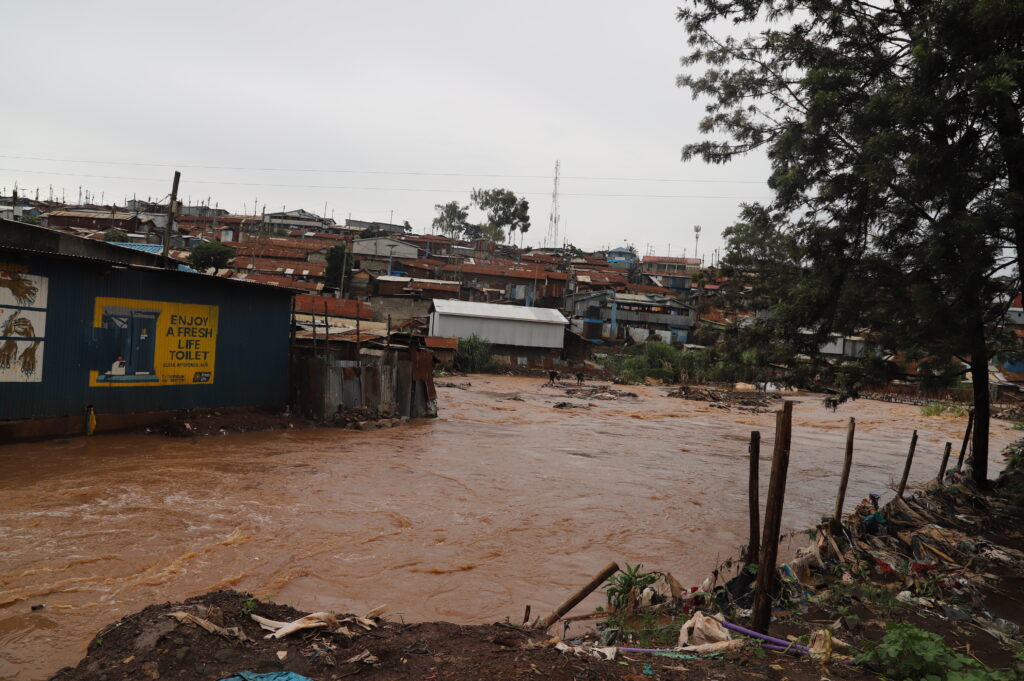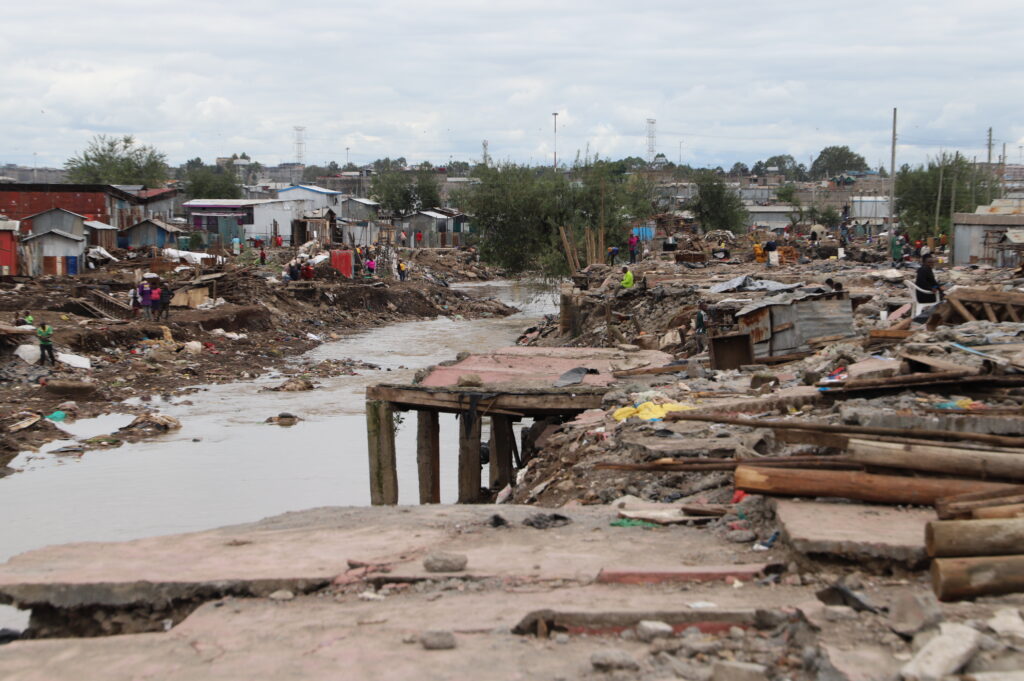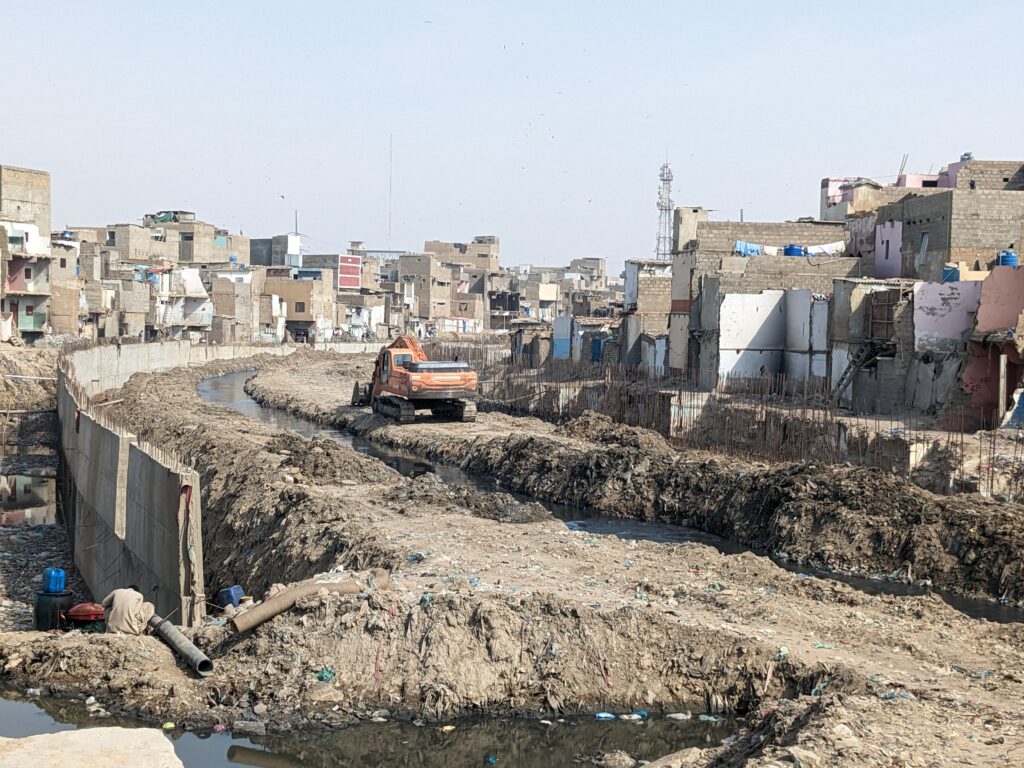In 2024, Nairobi, Kenya, was ravaged by floods, exposing the vulnerability of urban low-income neighbourhoods. This was compounded by a brutal response from authorities. In 2018 and then 2022, Karachi, Pakistan, experienced unprecedented and devastating flooding. This also elicited a top-down state response that continues to have cascading effects, amidst annual flood events.
As post-colonial cities, where a majority of their combined population lives in informal settlements, violent state responses in both cities lead us to consider some of the parallels and action points.
State response in Nairobi
Relentless rainfall and widespread flooding in May 2024 in Kenya have resulted in the tragic loss of at least 267 lives and the displacement of over 380,000 people. Floods inundated major roads and neighbourhoods in Nairobi, affecting areas such as Githurai, Athi River, Runda (an ‘upscale’ neighbourhood), and informal settlements like Mukuru, Mathare, Kibera, Korogocho, and Kawangware. The government’s response was marked by a directive to evacuate residents living within 30-metres of riparian corridors within 48 hours, causing further loss of life and property, and exacerbating the crisis.

The state violence inherent in these forced evacuations raises questions about the government’s motives and methodologies. With residents not allowed to return to their homes, a directive aimed at evacuation becomes a de facto eviction under the mantra of redesigning affordable housing. It is also unclear how the 30 metre rule has been derived.

Post-disaster evictions in Karachi
After the 2018 floods, local authorities blamed widespread flooding on poor planning and illegal settlements. This perspective led to the quick implementation of politically expedient evictions and demolitions of settlements along stormwater drains. In parallel, urban authorities expedited budget allocations and project approvals for new infrastructures, indicating a desire to reimagine a new urban aesthetic without informal settlements.
One settlement, Kausar Niazi Colony, faced large-scale evictions and demolitions to extend the natural drainage channel that flowed next to it. The initial assessment of housing structures was conducted using drones. This approach overlooked residents’ concerns and resulted in significant discrepancies regarding which structures needed demolition and the compensation owed. This led to the displacement of more than 4,000 households, affecting some of the city’s poorest residents. Many have still not received their promised compensation packages even after seven years of court cases and social activism.

Reflections from Nairobi and Karachi
In a glaring example of climate injustice, it’s evident that low-income residents near rivers in Nairobi’s and Karachi’s informal settlements bear the brunt of flood impacts but are also disproportionately targeted by mitigation efforts such as clearing drains and waterways. While the quality of housing structures within high-exposure areas needs to be addressed, blanket evictions without proper evacuation, rehousing, or compensation compound risks for the people most directly affected by climate crises.
This ‘double disaster’ creates a permanent state of standby which halts people’s ability to recover from the initial disaster, lasting years or even decades. Demolitions in Nairobi and Karachi have decimated communal networks and further exacerbated access to education and work, child care, health, and social networks. The ability of people to repair is closely tied to the support of these physical and social infrastructures.
In both cases, the veneer of ‘aesthetic violence’ veils the underlying agendas of gentrification. We observe a stark contrast in the treatment of informal settlements in Nairobi and Karachi compared to upscale developments, that remained unaffected by evictions despite their illegality or closeness to affected drainage channels.
More significantly, state discourses surrounding affordable housing in Nairobi and new infrastructure plans in Karachi during evictions function as a political shield for ‘violent gentrification’. State authorities exploit disasters to justify forced evictions without providing assurances of timely and appropriate housing units for those displaced.
In both cases, authorities took a distanced approach, devoid of community engagement or a contextual understanding of flood risk. The use of detached methodologies such as the imposition of an arbitrary 30-metre corridor in Nairobi or the use of drone surveys in Karachi conveniently ignore the social, cultural, and planning context of affected communities.
A call to action
In the aftermath of devastating floods in Nairobi and Karachi, we contend that the governments’ response to disasters is a locus for social, infrastructural, and climate injustice. Instead, we need approaches that consider the specific mitigation and adaptation needs of affected communities. Communal networks and existing infrastructures such as public and green spaces that support climate resilience and post-disaster recovery must be protected. Combining community dialogues, local knowledge and priorities, and spatial data and modelling can support conversations on both hazards, planning and housing which respect due process, rights and empowerment.